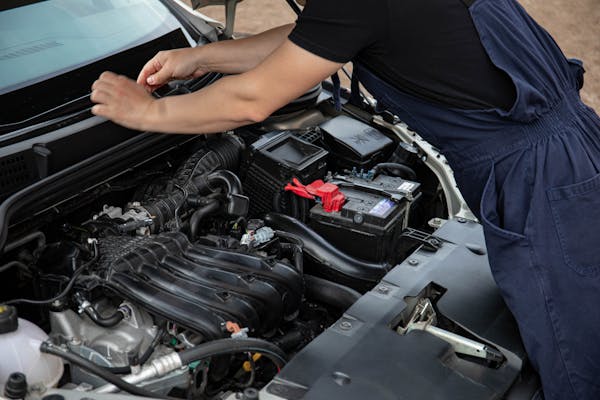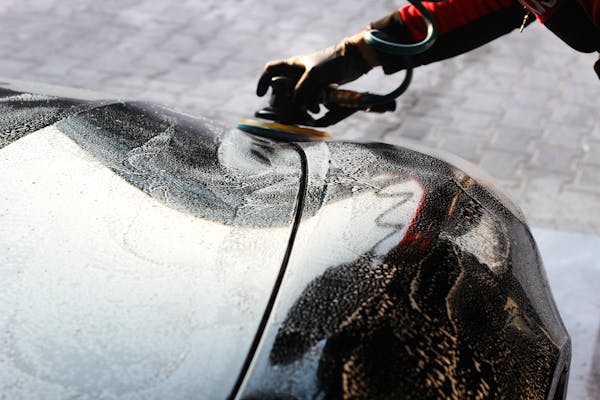Few parts of your car are as important as the battery, and winter’s cold temperatures can put a strain on it. A little preventive maintenance can help keep your car’s battery running strong all season long.
Corrosion on the battery terminals creates resistance that forces the battery to work harder. Clean the corrosion with baking soda, water and a toothbrush, then smear petroleum jelly on the terminals to prevent it from returning.
Check the Battery Charger
The battery needs to be at a full charge before the cold weather hits. Frequent short trips, stop-and-start traffic and the additional electrical loads of winter accessories like heated seats and defrosters can leave your battery in a low state. A maintenance charge will help restore reserve capacity and prevent sulfation that can damage the cells within the battery.

Before charging the battery, make sure to remove any mud or other debris from the battery terminals. Also check the points where the cables connect to the battery. If you see excessive corrosion, especially a white or blue powdery substance, this could indicate the cables are not properly connected and should be cleaned or replaced.
Put on gloves, and disconnect the negative cable first (marked with a minus sign or NEG). Then, attach the charger’s red clamp to the positive terminal of the battery, and the black clamp to the negative terminal. Set the charger to its slowest charge rate.
Clean the Battery Terminals
During the winter, corrosion can form on the battery terminals increasing electrical resistance. This can lead to your car battery not starting and is easy to prevent with basic household products. First, make sure your vehicle is turned off and open the hood. Check out Car Battery Maintenance Winter for more info!
Start by removing the battery cables from the battery terminals. Remember to always disconnect the negative cable (marked with a minus, or -) first and then the positive one (marked with a plus, or +). You can use a wire brush while wearing personal protective equipment or consult our Safety First manual for step by step instructions.
Next, use a mix of water and baking soda to clean the corrosion off the terminals and clamps. After you’ve cleaned them, wipe them down with a rag and allow them to dry. Finally, dab a little petroleum jelly on each terminal to lubricate them and help prevent corrosion. You can also buy car battery terminal cleaner at your local Les Schwab.
Get a Thermal Blanket
As batteries age, they lose their ability to hold an electrical charge. This loss of power can cause slow engine cranking or even a failure to start the vehicle at all. If you’re noticing these symptoms, consider having your battery tested to get an accurate read on the battery’s status.
Make sure the ignition is off and all accessories are turned off before testing your battery with a multimeter. Open the battery’s vent caps and carefully place one lead of the meter on the positive terminal and the other on the negative terminal. A healthy battery will show around 12.6 volts with the engine off.
If the battery doesn’t pass this test, it’s probably time to replace it. Some parts stores can also perform a simple battery test that will give you a good idea of your battery’s health and lifespan. Most stores also offer free battery recycling. Just be sure to recycle correctly as batteries contain dangerous acid.
Test the Battery
Ideally, your battery should be tested at least twice a year. It’s important to know your battery’s condition so you can anticipate when it will need to be replaced, especially during winter when cold temperatures and hard vibrations can quickly kill it.
Obtain a digital multimeter that can measure voltage. Be sure to select one with a wide range and that the probes are color-coded (red is positive, black is negative). Wearing nitrile gloves and eye protection, remove the battery’s terminal caps. If there is a lot of corrosion, loosen the terminals using a wrench or automobile-safe pliers and clean them with a solution of water and baking soda.
Place the multimeter’s red probe on the battery’s positive terminal and its black probe on the negative terminal. Observe the reading and make note of it. A healthy battery will display a reading between 12.3 and 12.5 volts under load, while a weak or dead battery’s reading will drop below 9.6 volts.

